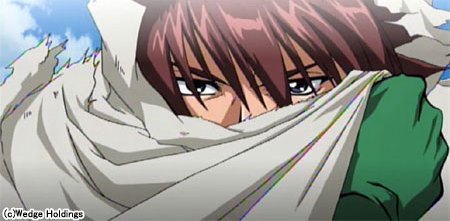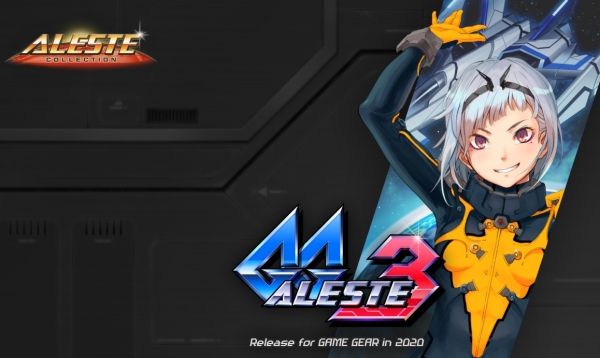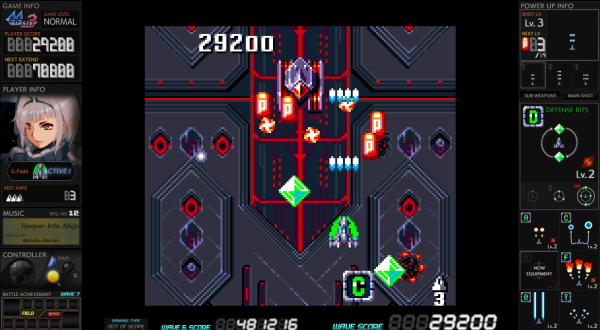The anime industry was in chaos around 2007. American publishers were ailing after years of releasing too many mediocre series via outdated methods, stores were deluged with unwanted DVDs, and Japanese companies still sought exorbitant licensing fees for those same mediocrities. It’s no surprise that some anime projects vanished entirely in this bubble of fragile markets and unsustainable ideas. One of them was Metal Hazard Mugen, a series that made the remarkable move of telling people to stay away from it.

That’s the first impression the Metal Hazard Mugen flyer gives us, anyway, with its taglines of “Let Me Alone!” and “Don’t pry into our affairs!” At the Tokyo Anime Fair of 2007, Wedge Holdings promoted Mugen along with the CGI action flick Cat Blue Dynamite and a cuddly kids show called Kuma3. Cat Blue Dynamite came out online while Kuma3 apparently aired on Japanese TV, but Metal Hazard Mugen never surfaced.
Reading the rest of the sell-sheet reveals that the taglines aren’t reverse psychology as much as they're trying to evoke the show’s bitter young hero and insular alien planet. Metal Hazard Mugen unfolds on a distant world where humans are the unwanted colonizers, and a mercenary and wealthy-family scion named Jin “Sigma” Katsuragi has discovered a talent for harmonizing with mecha. One of these, the Mugen X-OE, is a particularly powerful transforming car-robot, and it seems to be very, very important that its engine doesn’t stall, lest the pilot lose his raison d'etre. Maybe he's just late for work.
The awkward text raises a number of questions. We’re told that humankind’s “remembrance of our homeland, Planet Earth, is lost” a mere paragraph before we learn how our protagonist ranked in an intelligence test back on that supposedly lost Earth. Sentences cut off at random, leaving us to ponder unexplained terms like “Delft Apparition” and “MM interface.” It’s almost confusing enough to be a Yoshiyuki Tomino series.

Did Metal Hazard Mugen have any potential? It’s possible that Nozaki might have thrown a curveball or two, as he did with Garasaki’s drift into spiritualism and anti-American politics, and the Mugen robot itself, presumably a Beecraft design, isn’t a bad take on a transforming motorbike mecha. And, uh…well, the blond, blue-clad character’s design is okay.
The greatest flattery for Metal Hazard Mugen is that it doesn’t look that much worse than some of what actually made it to the market. At this point anime studios had cranked out drab mecha and science fiction series from Cybuster to Pilot Candidate to Starship Operators to Innocent Venus, and American publishers were still buying them. One can’t blame Wedge Holdings for thinking that Metal Hazard Mugen deserved to clog up a shelf at Suncoast with volumes two, three, and five of its overpriced DVD releases.

It’s possible that some pilot footage was cobbled together for the lone screenshot that survives online, but I doubt things went beyond that. Animation tends to cost more to produce than a live-action show, and no one would bankroll all of Metal Hazard Mugen’s 26 planned episodes without some guaranteed TV deal. Even so, I can’t fully dismiss the possibility that Metal Hazard Mugen was completed and aired on some obscure satellite station, possibly with full English voicework. Strangers discoveries have arisen among obscure anime.
Perhaps Metal Hazard Mugen didn't fail simply on its own merits. If Radix Planning is the same company as Radix Ace Entertainment, they went out of business in 2006. Wedge Holdings still exists, but they’ve apparently given up on getting a piece of the anime market. I'm sure they'll love it if everybody pesters them about a certain anime series canceled almost fifteen years ago.
Metal Hazard Mugen stirs no interest today. No one will mourn it as they might Five Killers or some other promising canceled anime of the bubble era, and that’s a fitting legacy. Mugen presents nothing but an unremarkable front, and in doing that it embodies everything forgettable about the global anime boom. But hey, it was thoughtful enough to tell us that it just wanted to be left alone.


